#maghrb
Explore tagged Tumblr posts
Photo
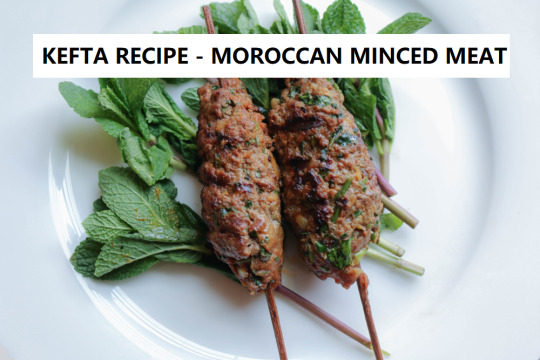
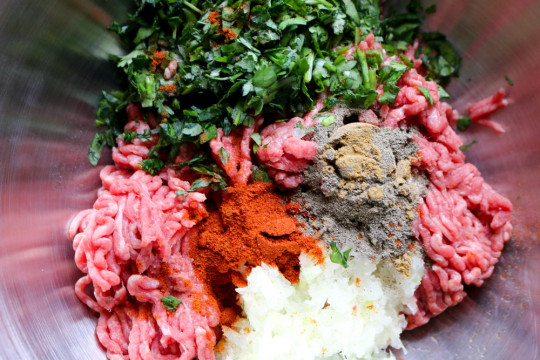
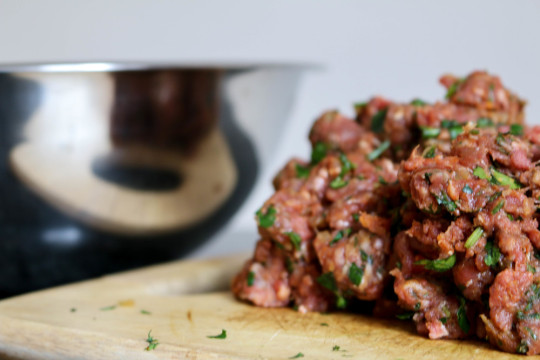
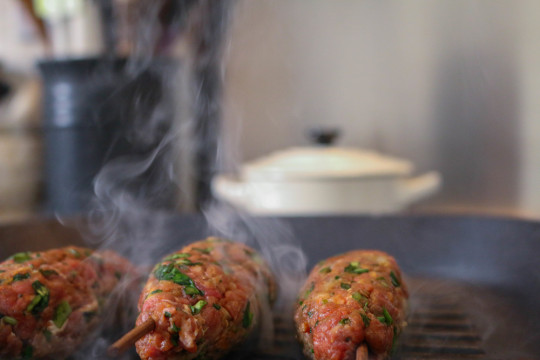
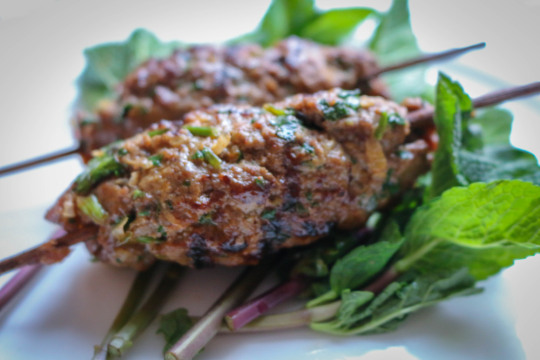
KEFTA - MOROCCAN MINCED MEAT RECIPE
INGREDIENTS
450 gr minced beef and/or lamb
1 medium onion, grated
2 tablespoons chopped fresh parsley
2 tablespoons chopped fresh coriander
Leaves of 4 mint sprigs, chopped
2 teaspoons paprika
1 teaspoon ground cumin
1 teaspoon salt
1/2 teaspoon ground black pepper
pinch cayenne pepper
METHOD
• In a large bowl, combine all the ingredients together. Use your hands or a large spoon to incorporate the meat, the onion, the herbs and the spices together.
• Add salt according to your taste.
• Shape and cook as desired.
Notes
• Minced meat should be 10 to 20 % fat.
#morocco#moroccofood#moroccofoodrecipes#food#food recipes#kabab#moroccan kabab#moroccan kefta#how to#to do#make#radar#morocco raddar#maghrb#northafrica#mint tea#tumblr radar#northmorocco
25 notes
·
View notes
Note
Ya toflaaa 🙄 haw congrats عال العرس الإنتخابي الناجح idk 3lach y'gololo 3erss but it was a success! Nchalah dima najmkoum m3ali proud of the Tunisian nation 🇹🇳🇹🇳
Come over I am giving you my own Tunisian passport!!!!!! 🙈😂
Ugh it s a shame I didn't get to vote this time 🙄 distance sucks.
L7assilou, rabbi y9addar l khir w rabbi ya7mi bledna wel maghrb lkabir kolou 🇹🇳🇩🇿🇲🇦♥️
6 notes
·
View notes
Text
my schedule for exam week:
3:30 a.m-taking a shower
4:00 a.m- pray tahajud/hajat
4:30 a.m-study
5:40 a.m-read Al- quran
6:00 a.m-subuh prayers
6:30 a.m-go to school
(back from school)
2:30 p.m-zuhr prayers
3:00 p.m to 6:00 p.m -rest (asr prayers)
7:00 p.m- maghrb prayers
7:15 p.m-study
8:26 p.m-isya' prayers
8:40 p.m-study
10/11 p.m- end of study session
0 notes
Note
I just got off from a ten hour journey from home to school and realised I've become impure. We started at 11am and reached by 9pm. During this time, the bus didn't stop even once for salah (like it usually does) cause coincidentally today, all passengers except me were non-muslims. I'm saying I only got to pray subhi. I was planning to pray the rest when we arrived but now I can't so what do I do? I'm 100% sure I started feeling impure after Maghrb so what do I do about Maghreb, zuhr and asr?
If this journey eighty kilometres is gives a concession allowing shortening of prayers is that which is customarily regarded as travel, and the distance involved is approximately eighty kilometres. So the one who is going to travel this distance or more on his outward journey may avail himself of the concessions that are granted to travellers, such as wiping over the khuffayn (leather slippers or socks) for three days and nights, joining and shortening prayers, and not fasting in Ramadaan.
then it is permissible for you to join two prayers, so join ‘Asr with Zuhr at the time of Zuhr, and join Maghrib with ‘Isha’ at the time of ‘Isha’.
Shaykh Ibn ‘Uthaymeen (may Allaah have mercy on him) was asked: Sometimes the time for classes atschool comes before the time for prayer, i.e. at twelve for Zuhr and at four-thirty for ‘Asr, and I cannot pray at school because there is no place that is suitable for prayer. Thus I am forced to offer a number of obligatory prayers together at the same time, and sometimes it is more than three obligatory prayers at once. What is the ruling on my prayer? Please advise me, may Allaah reward you with good.
He replied: With regard to joining two prayers that may be joined, there is nothing wrong with that in this case, because it is necessary, such as joining Zuhr and ‘Asr, and Maghrib and ‘Isha’. As for joining ‘Asr and Maghrib, for example, that is not permissible because it is not permissible to delay a prayer beyond its time under any circumstances. Based on that, in this case, if she is afraid that the time for the present prayer that cannot be joined with the following prayer will end, then she should pray it in whatever way she can. So if, for example, she is going to school at the time of ‘Asr, and she cannot pray ‘Asr there, then she should join it with Zuhr at the time of Zuhr, then go to school having done what is required of her. To sum up, it is not permissible for a woman or anyone else to join two prayers that it is not permitted to join, rather one may only join two prayers that it is permitted to join, such as joining Zuhr and ‘Asr, at the time of the earlier or later prayer, and joining Maghrib and ‘Isha’ at the time of the earlier or later prayer, when there is a need for that. End quote from Fataawa Noor al-Darb.
We ask Allaah to help you to do all that is good.
And Allaah knows best.
6 notes
·
View notes
Text
Routinities
Wake Up Early to get Fajr. Do Skincare Routine. Drink Lemon Water. Meditate, Exercise as a gym at Home. Positive Affirmations. Visualize. Dhuha Pray. Eat Healthy. WFH. Dzuhur Pray. More Water. Feeding Pets. Cleansing Shower. Journal. Ashr Pray. Reading Novel / watching Korean Drama/ Singing and Recording. Maghrb Pray. Isya Pray. Social Media Interractions. Video Call. Blogging. Positive Thoughts. Sleep as well. Midnight Pray.
0 notes
Text
Sudah Jarang Terlihat
Tulisan ini sedang meng-angan-kan masa bulan ramadhan.
Biasanya dulu di dekat rumah, para bapak setiap subuh menuju ke masjid/musholla untuk mendapat shalat subuh jamaah. Kadang mengajak putra/putri-nya. Jam5 keluar dari rumah, shalat subuh jamaah, ngaji sebentar. Lalu biasanya anak-anak jalan-jalan santai mencari udara sejuk karena masuknya masih siang. Selepas jalan pagi biasanya kumpul di salah satu rumah untuk sekedar tukar bacaan atau baca bobo bersama. Sekiranya sudah agak siang dan terlihat matahari, mereka pulang keruman masing-masing untuk mandi dan bersiap berangkat sekolah.
Di sekolah saling bercanda, kalau kumur-kumur atau menyikat gigi puasa akan batal. Candaan itu diselingi kelakar kecil dan kekhawatiran akan ‘bagaimana kalau sudah capek puasa ternyata batal’
Pulang sekolah tidur siang bangun sore membantu ibu membereskan pekerjaan rumah yang ringan dan menyiapkan buka puasa, sekedar beli gorengan atau apa.
Malamnya selepas shalat maghrb dan makan buka puasa, ber ramai-ramai ke masjid/musholla untuk shalat isya jamaah dengan saling menghampiri kerumah jadi jalan ke masjidnya bareng-bareng. Biasanya kami meninggalkan mukena di tempat yang akan kami pakai untuk shalat (nge tep tempat)
Sambil menunggui adzan isya dan perut yang masih kenyang, kami mainan kembang api dan petasan. Masuk masjid karena sudah qomat panggilan untuk shalat isya. Setelah shalat isya ada khotbah 7 menit. Berlomba menulis, menumpahkan isi khotbah di buku harian ramadhan, beramai-ramai menuju imam untuk minta paraf dan salim.
Masa sekarang, anak kecil sibuk main instagram, slime, musically, dan lainnya.
Mungkin jaman sudah berubah, atau saya sedang rindu masa kecil saya (?)
Arin, Jakarta, menjelang ramadhan 1438H.
1 note
·
View note
Text
Dari Ventilasi Majelis itu Kulihat Keindahan-Nya
Pengajian anak-anak dimulai usai shalat maghrb.
Setelah berdoa dan menyampaikan ilmu, ku duduk diatas tikar, bersiap menyimak kalamullah yang akan dibacakan oleh anak-anak satu persatu sesuai giliran.
Sebelum itu, sesuatu di balik ventilasi majelis sering mencuri perhatianku.
Awal bulan ku terpesona dengan langit berwarna merah jambu di satu ventilasi, sedangkan di ventilasi sebelahnya berwarna ungu. Maa syaa Allah. Rasanya ingin berlama-lama mengamati langit itu sampai warnanya berubah gelap.
Keesokannya, Allah 'mewarnai' langit-Nya dengan gradasi jingga, biru muda, dan merah muda.
Begitu seterusnya, di saat seharian runyam dengan pemandangan di atas bumi, Ia menyuguhkan penawarnya di atas langit.
Setiap malam pertengahan bulan hijriyah, bulan sempurna bulat selalu menjadi lukisan di tengah ventilasi itu. Aku tak paham soal astronomi. Tapi, jika kuperhatikan, bulan itu tampak berbeda warna dan ukuran setiap bulannya.
Aku suka ventilasi itu, karena ia menjadi perantara tenangnya hatiku karena melihat keindahan-Mu, tersambung dengan-Mu.
Aku selalu suka langit malam. Di saat daerahku sulit mendapat pemandangan bintang, kau suguhkan kesempurnaan bulan, kesempurnaan ciptaan-Mu, kesempurnaan-Mu.
0 notes
Text
اعلان عرض عمل بمؤسسة Sarl maghrb pipe ولاية المسيلة فيفري 2017
http://dlvr.it/NPDZvc
0 notes
Text
Jangan bangga terhadap pekerjaanmu. Boleh jadi kau tidak selalu lebih mulia daripada seorang yang membersihkan toilet.
Sore tadi saya berencana pulang ke rumah. Jakarta itu begitu, tau ada mau long weekend ga bisa santai hawa-nya. Semua kereta penuh, harga pesawat sudah mengikuti prinsip ekonomi banget. Tapi alhamdulillah saya dapat kereta tambahan arah Solo. Hehehe. Alhamdulillah.
Rute perjalanan sore ini maps warna nya merah semua.
Kebetulan ini kamis, kereta saya berangkat 18.45. Check in lah saya jam 18.00. Pas bertepatan dengan waktu adzan maghrb.
Sudah hopeless saya kira ga bisa maghriban tapi sungguh nikmat Alloh. Didalam, dekat peron ada musholla kecil. Ndilalah musholla nya tidak rame. Ndilalah sedia mukena. Ndilalah tidak kotor. Ndilalah ada kipas sama ac nya. Ndilalah bisa maghriban padal mepet bgt waktunya. Saya bersyukur atas setiap ke-ndilalah-an yang kadang datang tak diduga-duga.
Saya bersyukur atas setiap celah nikmat yang ada.
Berangkatlah saya wudhu. Kebetulan tmpt wudhu penuh dg laki-laki. Lalu saya (dan seorang teman perempuan) wudhu di westafel dekat toilet.
Mungkin tanggung jawab menjaga kebersihan,kenyamanan, dan air tidak tercecer adalah salah satu tugas penjaga toilet.
Toilet di stasiun jarang sekali yang bersih wangi, dan kering. Biasanya agak basah dan kotor.
Tapi anehnya area toilet yang saya datangi bersih kering dan tidak bau. Ternyata disitu ada seorang petugas yang selalu membersihkan.
Dia melihat dan mengijinkan kami wudhu di westafel (karena tidak menemukan tempat wudhu lain) Bisa terbayangkan bagaimana jadinya wudhu di westafel pastilah basah sana sini sekitaran westafel (kalo jadi dia saya bete, udh di lap basah lagi, begitu terulang lagi).
Dia dengan telaten mengepel dan mengelap kembali. Seperti itu dia ulang sampai toilet tetap bersih dan bernuansa kering. Tanpa negor perempuan yang pada wudhu dan membasahi sekitar westafel.
Subhanallah. Sementara kita, Bekerja di kantoran, duduk manis depan komputer, kadang telat, kadang istirahat siang kelamaan, kadang main main ke ruangan sebelah untuk sekedar bercerita, kadang pula korupsi waktu. Padahal pekerjaan kita tidak lebih berat daripada yang membersihkan toilet tadi. Semisal bertugas di lapang, kadang canvasing atau visit mampir sana mampir sini alih alih lelah istirahat padahal kita keliling diantar driver.
Subhanallah. Kadang memang nikmat yang kecil dan dailly jarang kita syukuri.
Semoga kita bisa belajar dan lebih bersyukur
0 notes